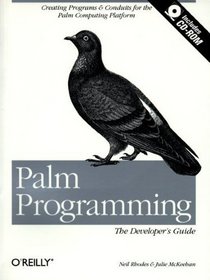Search -
Palm Programming : The Developer's Guide
Palm Programming The Developer's Guide
Author:
PalmPilot's popularity is growing and with over a million units sold, the Palm OS dominates the hand-held market. Wired has astutely described Palm's position in a recent article: "On its way to becoming the bestselling hand-held computer of all time, the 3Com PalmPilot has spawned an intense, emotional, and fanatical developer following ... more »
Author:
PalmPilot's popularity is growing and with over a million units sold, the Palm OS dominates the hand-held market. Wired has astutely described Palm's position in a recent article: "On its way to becoming the bestselling hand-held computer of all time, the 3Com PalmPilot has spawned an intense, emotional, and fanatical developer following ... more »
ISBN-13: 9781565925250
ISBN-10: 1565925254
Publication Date: 12/1/1998
Pages: 476
Edition: 1
Rating: 1
ISBN-10: 1565925254
Publication Date: 12/1/1998
Pages: 476
Edition: 1
Rating: 1
4 stars, based on 1 rating
Genres:
- Computers & Technology >> Programming >> General
- Computers & Technology >> Programming >> Microsoft Programming >> C & C++ Windows Programming
- Computers & Technology >> Hardware & DIY >> Handheld & Mobile Devices >> PalmPilot >> General
- Computers & Technology >> Hardware & DIY >> Handheld & Mobile Devices >> PalmPilot >> Advanced
- Computers & Technology >> General




